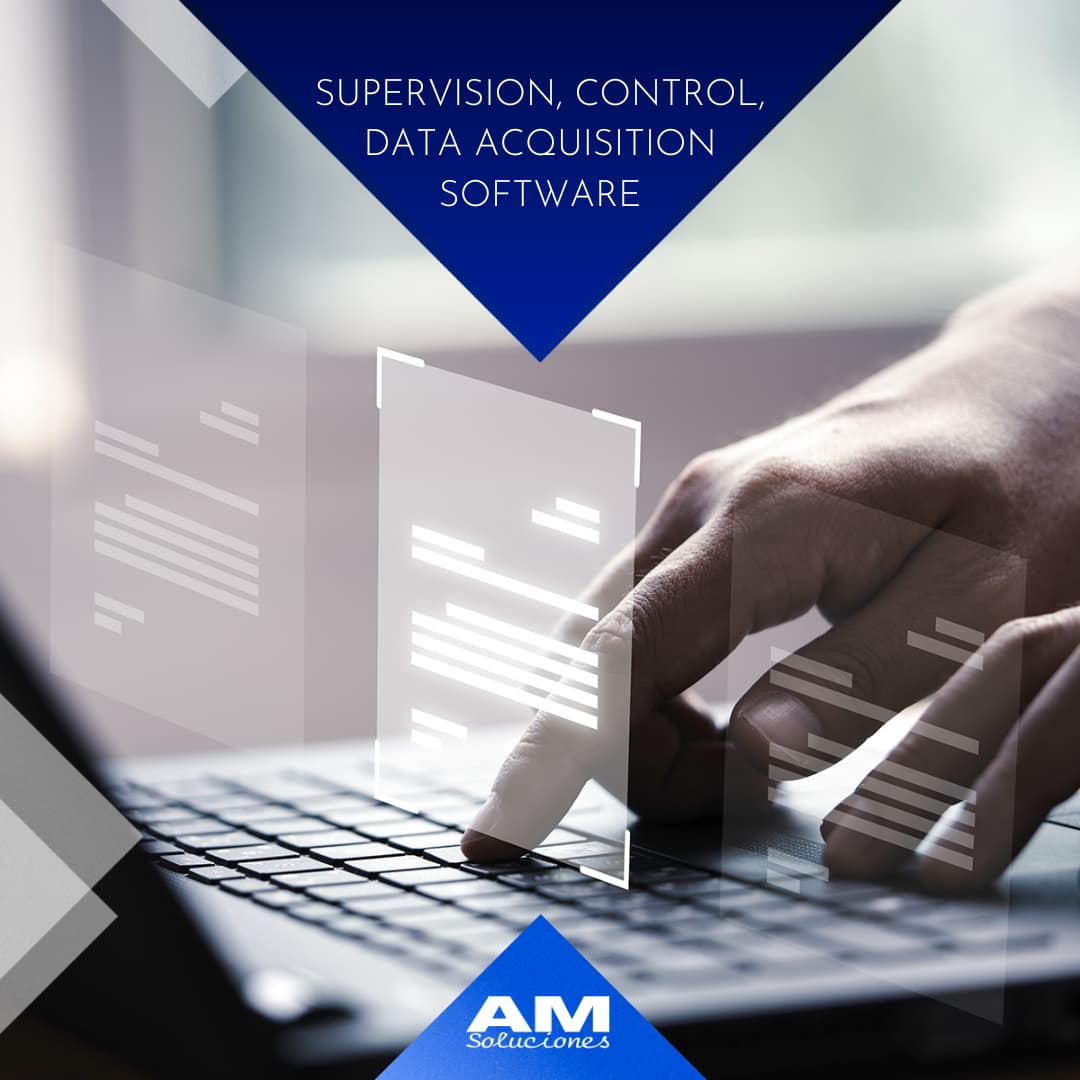Called SCADA, they are business-critical systems as they help maintain efficiency, process data to make smarter decisions, and communicate system problems to reduce downtime and fix potential errors.
It allows an industry to carefully study and anticipate the optimal response to measured conditions and execute those responses automatically every time.
In short, having precise machine control to monitor equipment and processes virtually eliminates human error. And what is more important, it automates the common, cumbersome and routine tasks that are carried out by an operator.
What is SCADA software?
It is an industrial automation and control tool used in production processes that can control, supervise, collect data, analyze data and generate reports remotely through a computer application.
Actually, its definition is that of a group of computer applications installed on a computer, intended for the automatic control of a remote productive activity that is interconnected with other so-called field instruments such as programmable controllers (PLC) and remote terminal units. (RTU).
What is SCADA software used for?
The complete software and hardware system serves to:
- Control industrial processes locally or remotely.
- Monitor, collect and process data in real time.
- Interact directly with devices such as sensors, valves, motors and the HMI interface.
- Record sequentially in a file or database events that occur in a production process.
- Create alarm panels in machine failures due to operating problems.
- Manage Maintenance with the magnitudes obtained.
- Quality control through the data collected.
Components of a SCADA system
- HMI: It is the interface that connects the man with the machine, presenting the process data to the operator through a monitoring system. In addition, it controls the action to be carried out through a screen, currently a touch screen.
- Supervision system (Computer): It has the function of collecting the data of the process and sending the instructions.
- PLC: Commonly called programmable controllers, these are used in the system as devices where automation functions are programmed in a programming language and in turn pass the information to the central system, since they are more versatile, flexible and configurable.
- Remote Terminal Units (RTU): These are PLC slave units that obtain independent signals from an action to send the information obtained remotely for processing. They connect to sensors that convert the received signals into digital data that send it to the PLC.
- Network or communication system: It is responsible for establishing the connectivity of the CPU computer to the RTUs and PLCs. To do this, it uses connections via modem, Ethernet, Wi-Fi or fiber optics.
- Sensors: These are devices that act as detectors of physical or chemical magnitudes, called instrumentation variables, and convert them into electrical variables or signals.
- Actuator: It is a mechanical device that is used to act or offer movement on another mechanical device.
Where are SCADA systems used?
These systems work well in different types of businesses because they can range from simple setups to large, complex installations. Thus, they are the backbone of many modern industries, including:
- Energy
- Alimentation and drinks
- Manufacturing
- Oil and gas
- Power
- Recycling
- Transport
- Water and sewage, etc.
At AM Soluciones we are experts in the development of SCADAs. If your company needs the implementation and development of this type of system, do not hesitate to contact us and tell us what you need without obligation.
